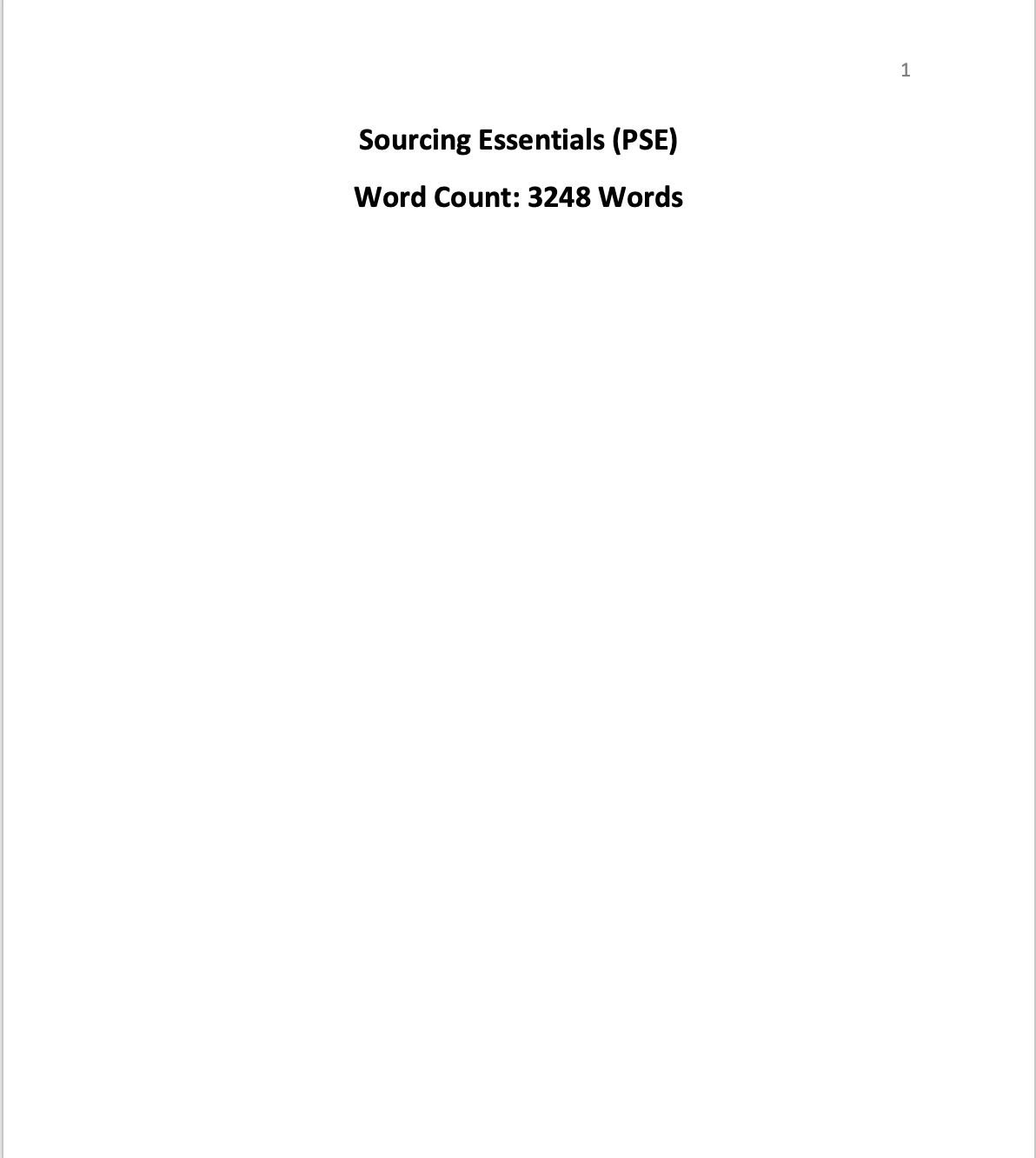-67%
Solution
Executive Summary
In this report, sourcing approaches for a spend category in Royal Commission for AlUla (RCU) has been evaluated. The selected spend category in this assessment is the Information Technology (IT) spend category. This is further compared with logistics, staff uniforms and office supplies. For evaluating the identified spend categories, various tools have been selected which are Kraljic Analysis Tool, Mendelow’s Analysis Tool for Stakeholder analysis and the Maslow Hierarchy of needs. Further, by using the SWOT analysis, the internal and external factors of the sourcing have been selected. A further analysis by use of Peter Block Grid’s has been applied to evaluate the interests of stakeholders to source appropriate position. The sourcing approaches identified included single, sole, dual and multiple.
The findings from the supplier appraisal of IT for RCU have been identified through the application of the Carter’s 10Cs tool. The various findings highlight on the need for RCU for actively invest in strategic sourcing strategy to guarantee their domination in the Saudi Arabia (KSA) tourism sector and quality services delivery. The findings in this assessment identify the multiple sourcing as inclusive of many suppliers engaged while single sourcing include a single supplier. This is with the sole-sourcing including a single monopolistic supplier involved in provision of the products/services. For dual sourcing, suppliers operate through demand conflicts.
Finally, from the findings, a set of recommendations have been suggested which are;
- RCU need to establish the best sourcing approach informed by the features of their category of spend
- Coming up with appropriate policies development in their procurement and supply (PS&M) department through an integration of technologies in their practice
- Simplified procurement process and ensure entire stakeholders interests are holistically prioritised
- Put in place appropriate technology in their different product lifecycle such as RFQ, RFP, negotiations of e-Auction. Currently, RCU is leveraging on use of SAP software for improving information flow in their sourcing approaches
Table of Contents
1.1 Organisation Background. 3
2.0 Spend Category and Position. 4
2.1 Kraljic Analysis Technique. 4
2.2 Business Hierarchy of Needs. 6
3.0 Sourcing Approaches Analysis. 9
3.1 Multiple Sourcing Approaches. 9
4.0 Sourcing Appraisal Checklist 12
5.0 Conclusion and Recommendations. 15
Figure 1: IT in RCU Spend Category. 5
Figure 2:Kraljic Analysis forIT. 6
Figure 3:Maslow Hierarchy of Needs in RCU organisation. 7
Figure 4:Mendelow Stakeholder Analysis in RCU.. 8
Figure 5:Peter Block’s Stakeholder Categories. 9
Figure 6:Summary of RCU SWOT Analysis. 10
Figure 7:Cater’s 10Cs Supplier Appraisal 13
1.0 Introduction
1.1 Organisation Background
This report focuses on Royal Commission for AlUla (RCU) organisation sourcing essentials. According to RCU (2022), the organisation has been actively operating since year 2017 in Saudi Arabia (KSA). The organisation is tasked with a responsibility of protecting and developing the old archaeological and anthropological sites which are in operating in AlUla Governorate (North-West KSA) which has been in operation in more than 2,000 years. Also, their active practice are informed by the fact that there are 5 different districts in AlUla Old Town for South of Hegra Historical City in Northern part of the country. The success of the operation is informed by the fact that 5 unique districts, 5 Heritage Sites, 15 Cultural Assets and upward of 5,000 hospitality keys. Considering the RCU, their practice in Hegra is guided by the view that the organisation is ranked in the UNESCO World Heritage Site. It is inclusive of upto 100 well-preserved tombs with facades cut into sandstone outcrops.
Currently, RCU operates an upward of 4,000 suppliers who are registered and certified and readily available in the Ariba/SAP system technology. By working actively through an active partnership with other Original Equipment Manufacturer (OEM), RCU is in a position of integrating technology and harnessing the government saving in resources in this area. This is by providing an appropriate public sector requirements, suppliers list with high-level capability of delivery of all set requirements and standard contract terms. Their operations in the sector of culture, heritage, natural sites, tourism, humanitarian sectors and economic development and protecting and planning for the operations of the RCU’s legacy.
1.2 Scope of Report
In this assessment, this report focus on evaluating four different sourcing approaches and how they are relevant in various spend categories in RCU. For RCU procurement department, it ensure that they guide success in their supply chain management to improve their entire supply relationships and improve their sourcing approach. This is to maximise overall value and assigned functions for procurement of goods and services for ensuring suppliers comply with KSA and organisation procurement policies. This is at the same time guiding implementation of best practice for public sector. At the end, an appropriate supplier appraisal checklist has been developed for the category of spend.
2.0 Spend Category and Position
The identified spend category by RCU is informed by what RCU (2022b) identify as demand for delivery of vital, world-class services in tourism sector albeit unprecedented pressure on resources (human and financial). As illustrated in figure 1, the need for the IT category of spend is to promote;
Figure 1:IT Spend category in RCU
Considering the IT services spend category, identification of the best sourcing approach mean that they are holistically controlling the overall procurement and supply process (CIPS, 2022). For the purpose of identifying the potential risks incurred, the value of the spend category, Kraljic matrix analysis and the Business Hierarchy of Needs has been selected for its application. Further, for noting o the sourcing approaches influencing RCU stakeholder, use of Mendelow Stakeholder Analysis Matrix is evidenced.

